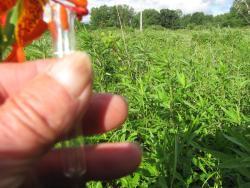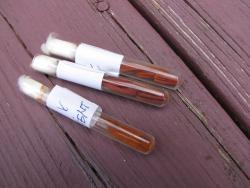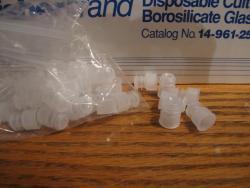I haven't done much pollen collecting, more because of poor planning than anything.

Until last year I've never had air conditioning, and knowing about relative humidity and dew points were paramount in keeping my house comfortable through the hot summers. Just because the air is cooler outside at night doesn't mean it's time to open the windows to cool the house down, for example. "It's not the heat, it's the humidity" is a time honored axiom. So I have always been cognizant of this relationship, and apply it to many situations (as everyone should

).
A case in point, this discussion. Anytime the temperature drops (i.e. ambient temp to fridge or freezer) the relative humidity rises for any given sealed volume of air. Is this important for pollen storage? Above freezing, certainly. If you put a sealed vial of pollen from 70F, 30% relative humidity into a fridge at 40F, the relative humidity inside the vile becomes 88%! This cannot be a good thing, and illustrates a case in favor of unsealed storage. In previous years, Lorn has mentioned his use of cotton as stoppers for his vials, and I immediately thought "what a great way to solve this problem of high humidity with lowering temperatures."
But below freezing, I don't think humidity matters because ice crystals don't act like liquid water or vapor.
Comments?







